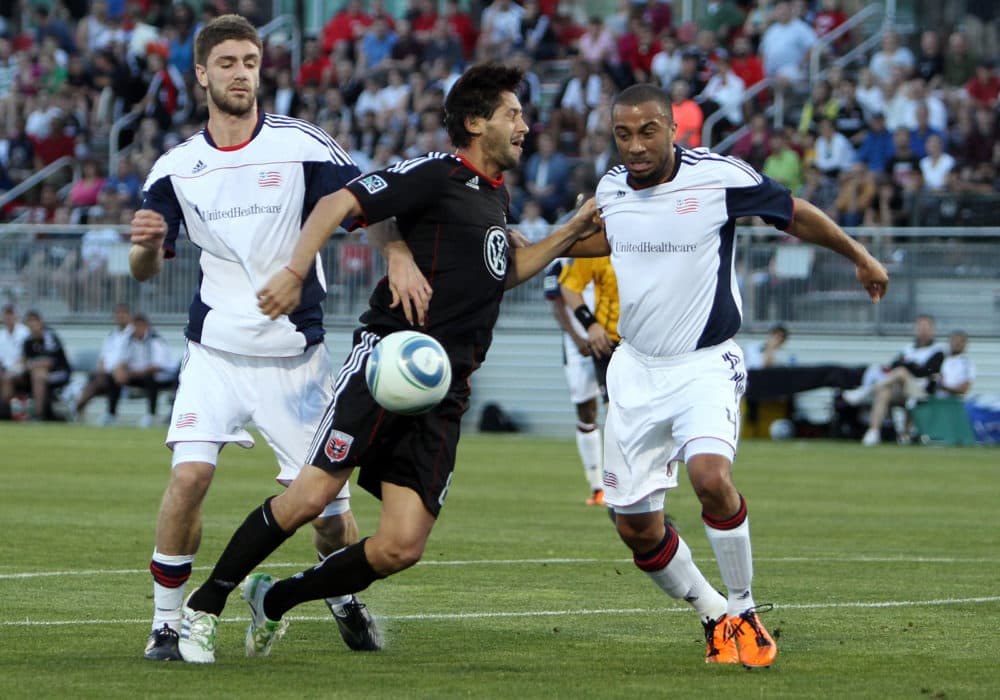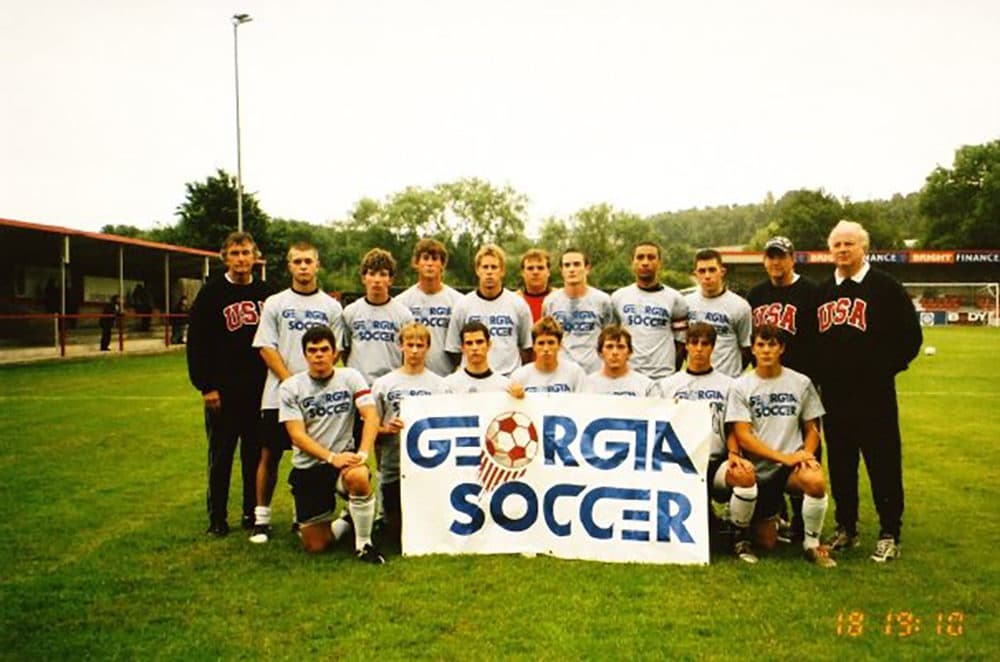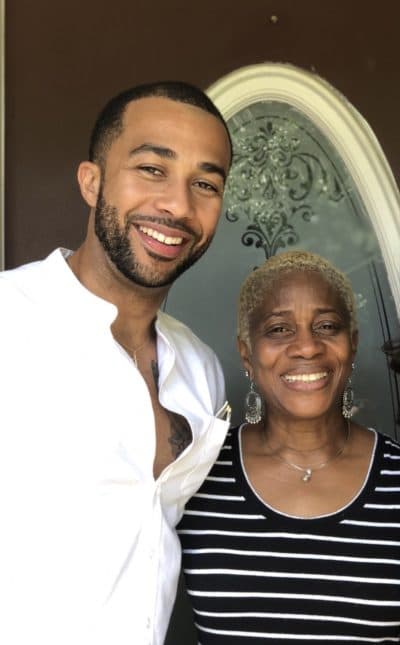Advertisement
The Widening Accessibility Gap In Youth Sports
Resume
This piece is part of our special 6/27/20 episode "Sports, Racism And The Myth Of Meritocracy." Check out the full show here.
When Otto Loewy was 8 or 9 years old, his mom signed him up for youth baseball. He had already been playing soccer, but why not try another sport?
That first season, Otto made the All-Star team. But that came at a cost — literally: Being an All-Star meant more travel and higher fees. So Otto’s mom gave him an ultimatum.
"She was like, 'Listen, you’re really good at both sports, but you’ve gotta pick one,' " Otto recalls. " 'Just pick a sport. Whatever you want. We’ll make the most of it. And I think you’ll be amazing at it.' "
The Cost Of Youth Sports
Otto chose soccer. But this issue of young athletes having to give up sports because of money? It happens all the time.
"Kids at really young ages get weeded out. And there’s sort of this haves versus have-nots, depending on how much money you have," says Jon Solomon of the Aspen Institute, which gathers data on youth sports. "You know, we have research that shows that kids who are from lower-income households are far more likely to not be playing sports on a regular basis compared to higher-income households."
And for Otto, even sticking with just soccer was going to be tough. As he got older, the costs rose.
This was back in the late '90s, and Otto says he was paying around $2,000 a season as a middle schooler. When he got to high school, that number jumped closer to about $3,000.
"From eighth grade onto my senior year, me and my mom would paint soccer fields ... because that was the only way I was gonna be able to play."
Otto Loewy
Unlike a lot of kids facing rising costs, Otto was able to arrange another way to pay:
"From eighth grade onto my senior year, me and my mom would paint soccer fields Friday night prior to the Saturday/Sunday games," he says. "So that’s, like, about six or seven fields. Just me and her. Because that was the only way I was gonna be able to play."
Otto’s story represents a growing problem.
"Over the course of the past, say, 30 years, we’ve had a defunding of sports within our community and school systems," says Dr. Kirsten Hextrum, a professor at the University of Oklahoma who studies race and college sports. "But a parallel occurrence has happened alongside that, which is: We’ve had an increase of private sports clubs popping up to replace what once was done by low-cost, recreational or school sports."
And there's a reason families sometimes go to extreme lengths to try and give their kids an opportunity to participate in these programs.
"Even basketball and football, which are the two sports that still remain the most common sports sponsored across schools in America, you aren’t becoming a college basketball star just by playing high school basketball," Hextrum says. "You have to be joining these travel teams, these AAU teams."

Even after Otto and his mom found a way to pay for high-level soccer, there were moments when people tried to make him feel like he didn't belong. One time …
"I forgot my water bottle. And a teammate of mine, he was like, 'Hey, I’ll get my extra bottle from my little brother,' " Otto recalls. "Like, 'Cool. Thank you so much. Really appreciate it.' So I’m just drinking the water, talking to, like, the 2-year-old kid, who’s, like, helping me out. And as I’m walking away, I remember vividly the parent literally was like, ‘Never drink from that Black boy again ever in your life.’ To the 2-year-old kid, who has no idea what’s going on. Wastes the water out completely. And I look back, and I watch it all unfold, and I’m just like, ‘Wow.’
"And then, mind you, there are numerous occasions where little rich white kids — to try to get underneath my nerve — would just pull out the n-word as much as they can, to get me riled up. So that was just a normal occasion."
'A Form Of Internalized Oppression'
Growing up in a predominantly Black neighborhood in inner-city Atlanta, Otto didn’t just get the sense that he didn’t belong in soccer from white families. He also got it from the Black community.
"It was the Michael Jordan era," Otto says. "And, in my community, they were like, 'You don’t have to play soccer. Like, that’s not a sport for you. That’s for the rich white kids up north. You can either play football or basketball with us.' "

The people saying this to Otto? They might’ve thought they had his best interest at heart. After all, in the U.S. there’s more money in those sports.
And, in a society that's so stacked against them and their children, Black parents, according to an Aspen Institute study, are more likely than white parents to view youth sports as a means to an end.
"So, parents of African American youth rated the pursuit of a college scholarship as 23% more important than white parents, and a pro sports opportunity as 26% more important," Solomon says.
"That's a form of internalized oppression that Black families may not even be cognizant of, that they're engaging in," says Derrick Z. Jackson, who writes about sports and race for ESPN’s The Undefeated. "So, Black families at some point end up, ‘OK, this is what society’s telling me my kid is going to have the best shot at doing.’ Because, let's face it: In American society, the way our society is set up, the most 'positive' image we get of Black men is when they are playing ball."
Dr. Scott Brooks, of the Global Sport Institute at Arizona State University, says when young athletes make sports their main priority, that can have a much longer-term consequence.
"They’ve put everything else to the side," he says. "They’re not as focused on school — or school, only as it pertains to keeping them eligible. They’re not pursuing creative things like art, music ... so much. This is everything, and when that ends — and often not of your own volition — all of these things that are senses of your purpose, that goes away."
Years Of Dedication, A $42,000 Reward
Eventually, Otto did earn an athletic scholarship to play soccer at Winthrop University in South Carolina. And, in 2011, he signed an MLS contract with the New England Revolution.
Unlike the vast majority of kids who devote themselves to sports, Otto actually did make it to the pros. It looked like the years of investment might actually pay off. But then he injured his back.
"Kind of like a ruptured disk between my L4 and L5," Otto says. "And I was released."
Otto played one season in the MLS. He made just $42,000.

Later, Otto got a job as a marketing analyst. On top of that, he started coaching youth soccer.
In 2016, he became an assistant coach for the Atlanta United Academy. In a country where youth sports is dominated by the pay-to-play model, this was supposed to be different. MLS Academies cover most financial needs ... except transportation. Not travel — the bus rides and flights for out-of-town competition — but getting from home to the team facility in downtown Atlanta and back.
Otto says that some of the Academy’s players didn’t have easy access to public transportation or parents who have time to drive them to practice.
"I put my hand up," Otto recalls. "I said, 'I will go pick them up myself. And I will drive them there.' "
Another coach offered to drive them back.
Without Otto’s help, some of the Academy’s players would’ve had a much harder time staying with the team. But Penn State’s Dr. Amira Rose Davis says individual volunteers are not a solution to the larger, systemic problems.
"To be fair, I think this happens a lot," she says. "Like, any time somebody shares a GoFundMe, and is like, ‘This is such a feel-good story.’ It’s not a feel-good story. It’s an indictment of the system. When we see a young Black boy get out of an under-resourced, overpoliced community by way of athletic scholarship, that’s not a feel-good story, it’s an indictment of the system.
"Some of these ready-made, digestible narratives — are they digestible because we swallowed what we were fed without paying attention to what the ingredients were?"
This story is part of our special episode "Sports, Racism And The Myth Of Meritocracy."
This segment aired on June 27, 2020.
